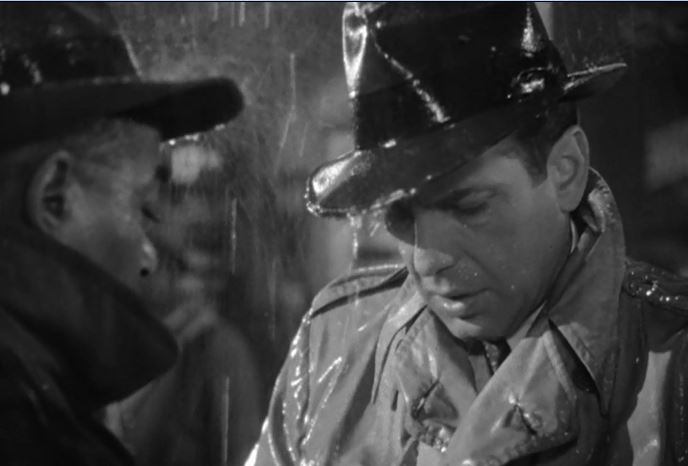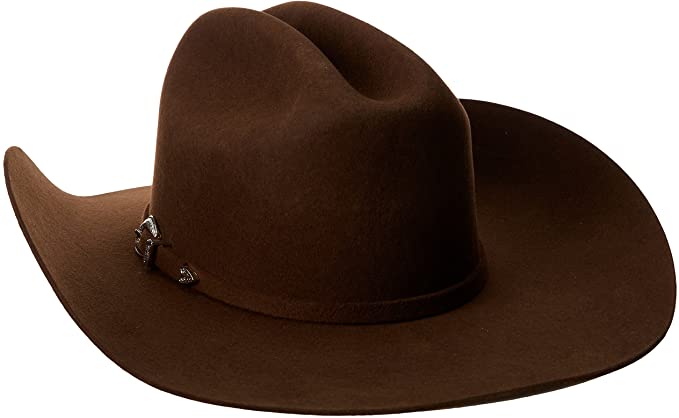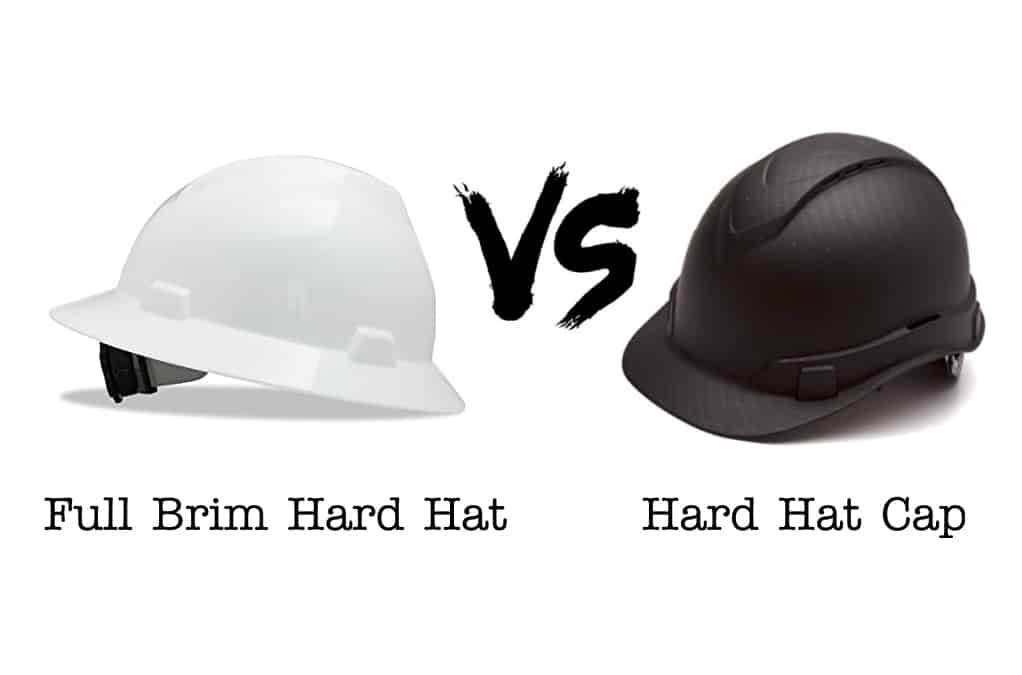For many of you, wearing hats while working is a must-have piece of work equipment, regardless of the weather conditions.
A hat may be required to shield you from the sun during the summer, from rain on rainy days, and to keep you warm during the winter.
The need to have felt hats stems from the advantages they bring. You can rely on felt hats during cold and wet weather as it is capable of keeping you warm and dry.
A felt hat can be worn in light showers and light snow, but not in heavy rain, thunderstorms, or snowfall.
However, wearing a felt hat in the rain necessitates extra caution, and this article will outline the precautions you should take when wearing a felt hat in the rain.

What Are Felt Hats?
For Westerners dealing with extreme climates, choosing felt hats as a work gear can be a long-term investment considering its advantages, especially during cold weather.
Felt scraps have been found dating back to the Neolithic age, making it the earliest form of fabric. Heat, water, and pressure are all you need to manufacture basic felt.
Felt can be made of fur or wool and each of them have its own benefits. As the evolution of hats exhibits, the whole process of felting has become a high art in the realm of fine hats.
For fashionistas, felt hats are a frequent stylistic component; nevertheless, for workers, it’s a different thing altogether. The primary objective of wearing a felt for workers is to provide protection. The major motive for wearing a felt hat was to protect oneself from the sun, rain, and cold.
If you’re wondering whether to buy a wool or fur felt hat, the answer is that it all depends on why you’re buying the hat and what purpose it serves.
The most affordable one is the wool felt. On the other hand, fur felt is more durable and functional.
When it comes to felts, the higher the price, the better the quality, but sometimes it’s just for the glittering. Here are a few pieces of advice to remember when purchasing a felt hat.
Before purchasing a felt hat, think about yourself, your interests, your comfort, and your purpose.
→ Choose a felt hat that has the right height, shape, and crown crease for you. Otherwise, if it isn’t the right size, it won’t be of any use. Try on a few different styles and examine yourself in the mirror.
→ Don’t get too caught up in the specifics at first; focus on what looks well on you and makes you feel comfortable. If you’re unsure, consult your colleagues, particularly those who wear felt hats at work.
→ When assessing crown forms, pay close attention to the size and shape of the brims. The proportion of the horizontal brim to the vertical crown is crucial to the hat’s aesthetic balance and impact. They can be flat, rolled, flanged, or folded up and range in size from three to five inches.
→ Before you buy, pay close attention to this detail since if the brim and the crown is not in perfect proportion then it could limit your vision and could slow you down.
The Two Types of Felt Hats
The distinguishing factors of the two types of the felt hat is the fabric in which it is manufactured: the wool and fur. So, the two types of felt available in the industry are Wool felt and fur felt hats.
Sheared sheep’s fur is used to make wool felt. Wool isn’t as long-lasting as Fur Felt. Woolen hats have a substantially shorter lifespan.
However, Fur felt is not sheared. The animal pelts are treated in such a way that results in a lighter, more robust hat that can survive reshaping and the weather.
Down below are some tips necessary to take care of both the hat types.
Fur Felt Hats
Mostly, Fur felt hats made from rabbit fur. However for making a more fine and quality fur felt hat some hare fur is used, and is frequently blended with beaver fur to create hats in a variety of middle price ranges. The finest furs are beaver and chinchilla, which are commonly used in the finest hats.
Fur felt hats are outstanding in terms of weight, softness to the touch, and ability to maintain shape while enduring weather and repair.
Almost all fur felt hats are shower-proof, but there may be exceptions. they’re shower-proof means they can be worn in low to moderate rain without risk of damage to the fabric, texture or shape.
Exposure to persistent HEAVY RAIN, on the other hand, will cause the hat to deform and possibly shrink with time. As a result, it’s never a good idea to wear a felt fur cap all the time when it’s raining hard.
However, you can only wear it in a mild shower if it is water-resistant; if it gets wet, let it dry naturally, away from any heat source, while lying on its crown.
Only after the hat has dried and been exposed to the sun can you brush it counter-clockwise with a soft-bristle brush to eliminate dust and light marks.
Always remember to keep your felt hat away from severe heat sources, such as a car dashboard or a heater. This could result in shrinking or deforming the leather sweatbands. Then the hat could no longer be used effectively.
Wool Felt Hats
Some wool felt hats are available in industry as ‘water resistant’ or ‘crush-proof,’ but they are for a limited period of time. Most of the brands caution and recommend not to wear wool felts in the rain.

Also, if wool felt hat is used severely over time, there’s a high probability for it to shrink, discolour, and lose its shape, making it considerably more difficult to repair than fur felt.
Wool hats require the same general care as fur felt hats, but a sticky lint-roller should be kept on hand for cleaning. The reason is that wool generates more static than any other materials.
Is It Okay to Wear A Felt Hat In Rain?
With the exception of a few rain hats, the majority of hats are water resistant rather than waterproof.
However, trust me when I advise that most felt hats will withstand a light rain shower, drizzle, or even a coating of snow, it mainly comes from my personal experience.
However, thunderstorms and heavy rain are bad for felt hats so always avoid wearing them in these circumstances.
If you get caught in the rain wearing a felt hat, pat it dry and place it on a flat surface with the brim facing up and dry it naturally away from direct sunlight.
Tips To Take Care of Your Felt Hat
1.) Do not place your felt hat down on a table or any other ground surface; instead, place it upside down on the crown and not on the brim. It may lose its shape or become flattened if this happens.
2.) Your hat can be hung on a hook or a hat rack, but make sure the pin or hook isn’t too pointed and sharp, or the hat will be damaged. Do not leave it on a peg for an extended period of time, as this may cause it to lose its shape.
3.) For extended storage, use a hat box that can contain both the crown and the brim, and keep it in a cool, dry environment. Extreme heat and dampness, both can harm the hat and should be avoided.
4.) You can use a damp towel to dust the hat, but make sure it isn’t too wet, and a lint roller is also recommended.
5.) Allow your felt hat to dry naturally if it gets wet. The hat may shrink or become distorted if you use a heater or hair dryer.
6.) Remember Heat and sunlight can cause the hat to fade and shrink, so don’t leave it in a hot car or near a heater.
7.) Flip the sweatband down and let it dry naturally if it becomes oily or damp.
To Conclude
Wearing felt hats in the rain can ruin your hat, whether it’s made of fur or wool. The suggestions in this article will undoubtedly extend the life of your hat. Many people believe that wearing felt hats in a light shower is okay.
Yes, it is okay to wear; nevertheless, if you find yourself in heavy rain later, remember to remove the felt cap. It will no longer be useful and could result in damage
Always remember to seek advice and choose the best option while selecting a felt hat. When choosing the felt hat, always remember to ask opinions and try to opt for the best option. Look for the specifics, your interests, purpose, and comfortability.







